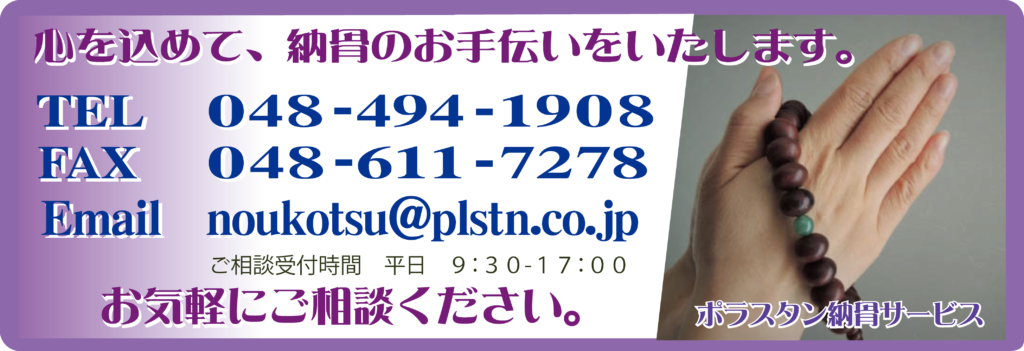No wake ceremony, no farewell ceremony, no graveside service
Recently, I often receive consultations from supporters of my time as a member of the Diet regarding preparations for ending one’s life. These are consultations on so-called “end-of-life” planning. We realize that the need for one-stop services, starting from what to do with one’s property to finding a funeral and a grave after death, has been increasing considerably.
Perhaps it is because my company has started an ossuary service, but people come to my office because they know that I have connections with professionals. Inheritance is a specialty of the professionals, and I am keenly aware of the importance of introducing them to people who are experts in their fields and whom they can trust.
But this is also my specialty. I understand the desire to spend as little money as possible on both the inheritance and the funeral, but I also understand the desire not to be lax.
In the past, it was said that a funeral would make change with incense, but nowadays there are fewer people attending funerals, and the amount of incense is less, which is an economic background.
There is a significant increase in the number of people who say that if it were their family, they would hold the funeral as in the past, but in their case, they would prefer a secret or family funeral or just a cremation ceremony without a wake or farewell ceremony. I sense a strong will not to burden the remaining family and relatives after the death of a loved one.
It costs a considerable amount of money to acquire the right to use a grave and to prepare the gravestone, but nowadays it is becoming more and more common to be buried as a permanent memorial service in a combined grave, where the deceased is not buried in a single grave, but instead is buried with many others. There are also “tree burials” where the deceased is buried under colorful seasonal flowers and trees, “ocean scattering” where the remains are returned to the sea, and “space scattering” where the remains are scattered in outer space.
People who cannot visit graves in the countryside and would like to have a grave close to where they live. We are also able to provide “graveside service” to meet the increasing demand for such services.
If you are planning to leave a grave, there is a new method of burial, called “burial in a sacred place,” in which the remains are buried in a historic temple or the head temple of a religious sect, and we are developing this as a new service.
Since the end of World War II, funeral rites have seemed to converge into a single trend. However, those days are already over, and there is a growing demand for new, inexpensive funeral rites and gravesites that allow people to mourn the deceased with care, without being bound by old customs and traditions.
Funeral rites and graves have been a trend in the past 50 years or so, not necessarily in the past.
There are many different ways of having funerals and graves in the world, depending on religion and ethnicity. I believe that there are many different ways. We would like to continue to develop services that care for the deceased without being particular about a single funeral or grave.
⇒ The following is a list of all the places where the bones of the deceased have been buried For those who are looking for a place of burial
Cross-border EC
cross-border B to B business
Introducing our business initiatives
POLARSTERN Broadcaster
Go to Youtube channel

Beenen Official Shop (Rakuten Ichiba Store)※Japan only

Health & Beauty Food Beenen Base Shop ※Japan only
Cross-border EC
cross-border B to B business
Introducing our business initiatives
POLARSTERN Broadcaster
Go to Youtube channel

Beenen Official Shop (Rakuten Ichiba Store)※Japan only

Health & Beauty Food Beenen Base Shop ※Japan only
